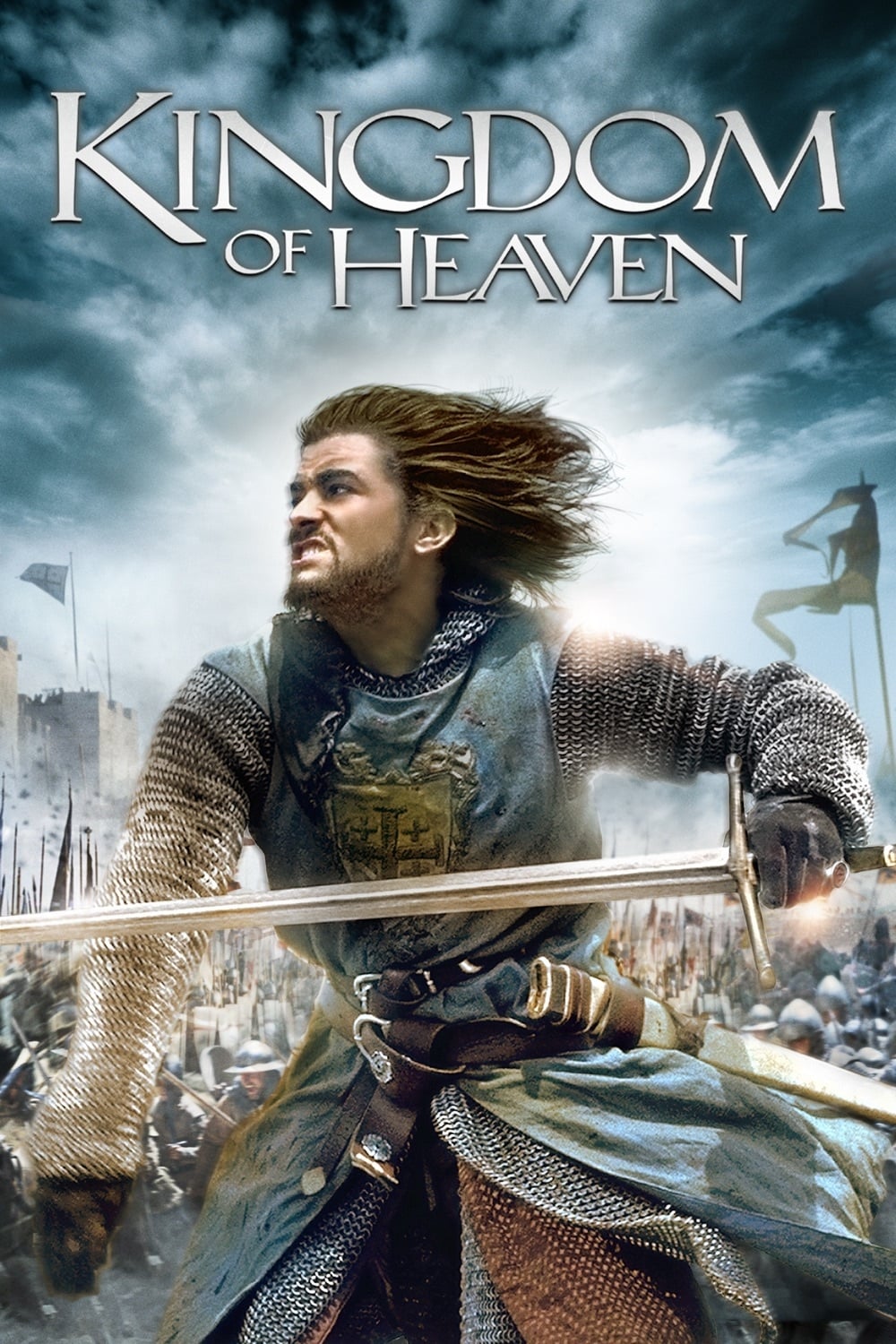04 Mar Kingdom of Heaven (2005)
A Trip to Holy Ground
Ridley Scott is the current and all time master of the big budget long form film, no question. Most big budget productions are really collections of episodes. Few filmmakers have the control to manage the hoards of creative talent that are involved in these efforts. (Jackson and Lucas depend on musical bombast, sheer scale and complex myth.)
So we get either a hodgepodge or a lowest common denominator deal.
This man has the power to bend them all to a common vision, to coordinate that vision to the service of ruthless storytelling and to (in spite of the many bosses) sometimes go where no one has before.
I’ve commented before about Scott’s ability to have each camera shot mature at some point (about two seconds before it ends) in such a way that it anticipates the next image. No one else seems to have this ability. The famous George Stevens method was to shoot every scene from every angle and create a rhythmic dance of the eye afterward. Most filmmakers follow something like this today, which means that the registration of every shot happens after it appears, not before as with Scott.
Most of this, I think, is in how the camera moves. Early on, he establishes certain rules of vision that tell us when he does this, this something will follow, all done by how the camera moves. Because this visual logic is so rigidly followed, we cannot see the usual seams between real and computer generated images. He must have these rules written down for the hundreds who must be involved to understand and follow.
The story itself is mundane as with all such which have to have mass appeal. The acting is less aggressive than in his last two projects, and for my tastes that’s good because it allows us more space for the cinematic experience.
Some images remain in my mind after a few days. when Saladin begins his attack on Jerusalem at night and the fireballs start coming at us over the horizon. This is truly impressive and serves as the template for the entire battle.
In that same timeframe, we have a shot of our hero anticipating. It is a three-part shot. First we see a smoky moon, then the camera moves down and to the right and we see a fluttering canvas. Each of these are amazingly rich, with the smoke anticipating the waves of the canvas. It is as if all the sea and the rolling hills and the desert were compressed into those two images. Then we move on down to our hero’s face. In this ten seconds, Scott makes up for all Bloom’s weaknesses.
Elsewhere he does the same for our Eva, but in her case he makes a huge misstep, In despair she cuts her hair. Everything before and after is perfect, but he insists on putting her brother’s leprous face in her mirror. That’s obviously not from the same man who completely redefined everything we saw in “Blade Runner” at the end with the image of an origami unicorn.
Much depends on the battle scenes in these projects, regardless of how coherent the long form is. All battle scenes these days copy Kurosawa and Welles plus the “helicopter” like shots since expected. Though much celebrated by audiences, “Braveheart” was just a copy.
But here we have a few new things in the close up action: the eye that behaves as if it were part of the battle not conveniently observing it. Scott uses this sparingly. But it makes all the difference.
Posted in 2005
Ted’s Evaluation — 3 of 3: Worth watching.



No Comments